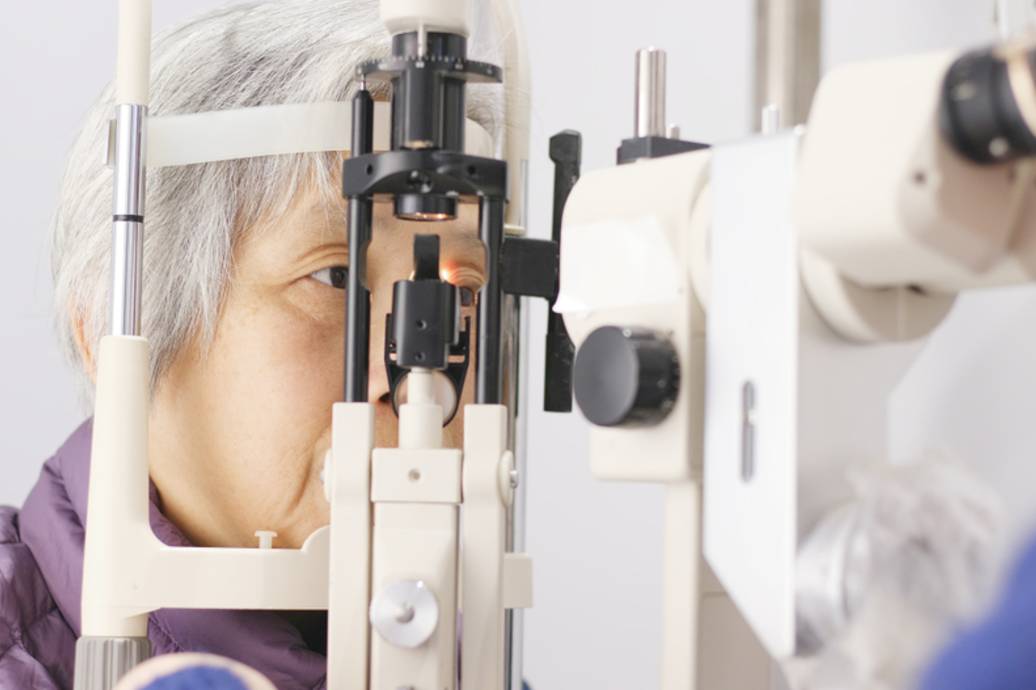
Share Via Email
Why Are Regular Eye Exams Important for Seniors?
Why older adults need eye exams
It’s normal to experience some vision changes as you age, so it’s not always obvious what kinds of problems need attention. But if left untreated and undiagnosed, certain vision problems can severely impact the ability of older adults to remain active and independent. That’s why, for seniors, regular eye exams are critical to overall happiness and well-being.
How often should seniors get eye exams?
According to the CDC, approximately 93 million U.S. adults are at high risk for vision loss, yet only half visited an eye doctor in the past 12 months. With numbers like that, it’s easy to see how regular eye care can have a life-changing impact on preserving the vision of millions of people.
A comprehensive eye exam by an optometrist or ophthalmologist (eye doctor) is necessary to find eye diseases in the early stages when treatment to prevent vision loss is most effective. Adults ages 55 to 64 need a complete general eye exam every 1 to 3 years. Adults 65 and older should be seen every 1 to 2 years. Your eye exam should include:
- Eye pressures
- Visual field (side vision)
- Dilated retinal examination
- Slit lamp (microscope)
- Refraction
During the exam, visual acuity (sharpness), depth perception, eye alignment and eye movement are tested. Your eye doctor could even spot other conditions — like high blood pressure or diabetes — before your primary care doctor.
If you have any of the following eye problems, visit your eye doctor as soon as possible:
- Decreased vision
- Draining or redness of the eye
- Eye pain
- Double vision
- Floaters (tiny specks that appear to float before your eyes)
- Circles (halos) around lights
- Flashes of light
Why older adults need eye exams.
There are many common changes that can have a big impact on your day-to-day activities.
- Dry eye syndrome: This is a common and often chronic problem, particularly in older adults whose eyes produce too few or poor-quality tears. Tears maintain the health of the front surface of the eye and provide clear vision. Treating your dry eyes will help them feel more comfortable and your vision won’t be affected when you’re reading, driving or other activities.
- Cataracts: They can also cause blurry vision, decreased contrast sensitivity, decreased ability to see under low light level conditions (such as when driving at night), dulling of colors and increased sensitivity to glare. Your eye doctor can detect early cataracts and advise you on how to reduce glare and other symptoms of mild cataracts. Cataract surgery is one of the most common outpatient surgeries performed in the United States and takes about 30 minutes.
- Age-related macular degeneration (AMD): This eye disease affects the macula (the center of the light-sensitive retina at the back of the eye) and causes central vision loss, which affects the ability to see fine detail and colors.
- Glaucoma: A group of eye diseases characterized by damage to the optic nerve, it results in loss of peripheral vision. Glaucoma is often painless and can have no obvious symptoms until there is a significant loss of side vision. If left untreated, glaucoma can lead to total blindness. People with a family history of glaucoma, African Americans and older adults have a higher risk of developing the disease. When found early enough, it can be effectively treated.
- Retinal detachment: This is a tearing or separation of the retina from the underlying tissue. Retinal detachment most often occurs spontaneously due to changes to the gel-like vitreous fluid that fills the back of the eye. Other causes include trauma to the eye or head, advanced diabetes and inflammatory eye disorders. If not treated promptly, it can cause permanent vision loss.
- Diabetic retinopathy: This condition occurs in people with diabetes as the result of progressive damage to the tiny blood vessels that nourish the retina. These damaged blood vessels leak blood and other fluids that cause retinal tissue to swell and cloud vision. The longer a person has diabetes, the greater the risk of developing diabetic retinopathy. At its most severe, diabetic retinopathy can cause blindness. Early detection and treatment can prevent or delay blindness in 90% of cases. Note: People with diabetes are also at higher risk for other eye diseases, including glaucoma and cataracts.
Six Ways to Protect Your Vision
- Be regular: Visit your eye doctor every 1-2 years for regular eye exams.
- Eat right: Be sure to eat a healthy diet, including leafy greens such as spinach or kale, and maintain a healthy weight.
- In your genes: Some eye conditions can be genetic, so know your family’s eye health history.
- Be shady: Look for sunglasses with a sticker on the lens that says they block out 99% to 100% of UV-A and UV-B radiation (the sun’s rays).
- No smoking: If you smoke, try to quit. Smoking can increase the risk of age-related macular degeneration, cataracts, glaucoma, diabetic retinopathy and dry eye syndrome.
- 20/20/20 rule: If you spend a lot of time focusing on one thing, your eyes can get tired. To reduce eye strain, every 20 minutes, look away about 20 feet in front of you for 20 seconds.
Our retirement community is focused on your wellness.
At Lakewood, we feature a variety of senior wellness in Richmond to help you live a happier and healthy life, including our on-site Lakewood Wellness Clinic with exceptional senior health services just outside your front door.. To learn more, fill out our contact form.

